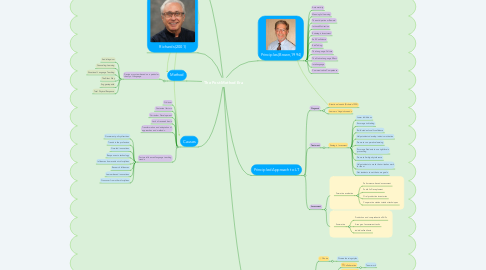
1. Richards (2001)
2. Approach
2.1. Set of beliefs and principles
2.1.1. Communicative Language Teaching
2.1.2. The Natural Approach
2.1.3. Competency-Based Language Teaching
2.1.4. Content-Based Instruction
2.1.5. Cooperative Learning
2.1.6. Lexical Approaches
2.1.7. Multiple Intelligences
2.1.8. Neurolinguistic Programming
2.1.9. Task-Based Language Teaching
2.1.10. Whole Language
3. Method
3.1. Design or system based on a particular theory of Language.
3.1.1. Audiolinguism
3.1.2. Counseling-Learning
3.1.3. Situational Language Teaching
3.1.4. The Silent Way
3.1.5. Suggestopedia
3.1.6. Total Physical Response
4. Causes
4.1. Criticism
4.2. Contextual factors
4.3. Curriculum Development
4.4. Lack of research basis
4.5. Transformation and adaptation of approaches and methods.
4.6. Factors influenced language teaching trends.
4.6.1. Goverment policy directives
4.6.2. Trends in the profession
4.6.3. Guru-led innovations
4.6.4. Responses to technology
4.6.5. Influences from academic disciplines
4.6.6. Research Influences
4.6.7. Learner-based innovations
4.6.8. Crossover from other disciplines
5. Principles (Brown,1994)
5.1. Automaticity
5.2. Meaningful Learning
5.3. The anticipation or Reward
5.4. Intrinsic Motivation
5.5. Estrategic Investment
5.6. Self-Confidence
5.7. Risk Taking
5.8. The Language- Culture
5.9. The Native Language Effect
5.10. Interlanguage
5.11. Communicative Competence
6. Principled Approach to LT
6.1. Diagnosis
6.1.1. Situational needs (Richards 1990)
6.1.2. Learners' Linguistic needs
6.2. Treatment
6.2.1. Strategic Invesment
6.2.1.1. Lower Inhibitions
6.2.1.2. Encorage risk taking
6.2.1.3. Build student's self-confidence
6.2.1.4. Help students develop intrinsic motivation
6.2.1.5. Promote cooperative learning
6.2.1.6. Encorage Students to use right-brain processing
6.2.1.7. Promote Ambiguity tolerance
6.2.1.8. Help students to make their mistakes work for them.
6.2.1.9. Get students to set their own goals.
6.3. Assessment
6.3.1. Formative evaluation
6.3.1.1. Performance-based assessment
6.3.1.2. Portfolio Deveploment
6.3.1.3. Oral production inventories
6.3.1.4. Cooperative student-student techniques
6.3.2. Summative
6.3.2.1. Production and comprehention Skills
6.3.2.2. A range of assessment tasks
6.3.2.3. individualized tests
7. Methos for inspiring students
7.1. Choice
7.1.1. Diverse learning styles
7.2. NEA Cs
7.2.1. Collaboration
7.2.1.1. Team-work
7.2.2. Communication
7.2.3. Creativity
7.2.3.1. "Unique human pleasure activity"
7.2.4. Critical Thinking
7.2.4.1. Problem-solving
7.3. Caring
7.3.1. Attention
7.3.2. Motivation
7.3.3. Inspiration
7.4. A shift
7.4.1. Teacher-centered classroom
7.4.2. Student-centered classroom
7.5. Two loves
7.5.1. The teachers' love and passion for the subject.
7.5.2. The teachers' genuine love for students
